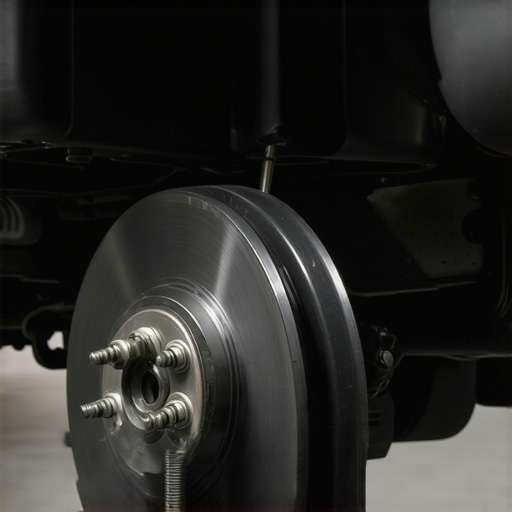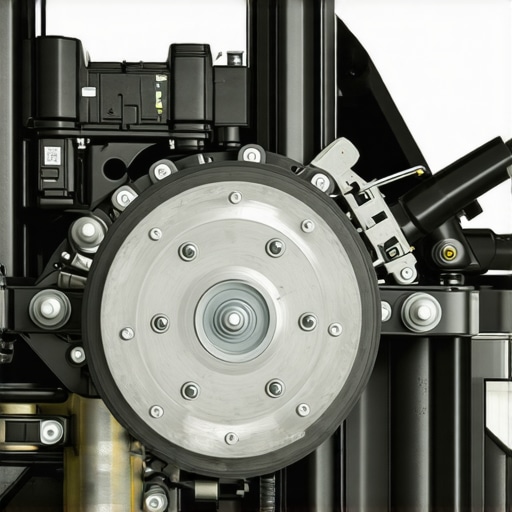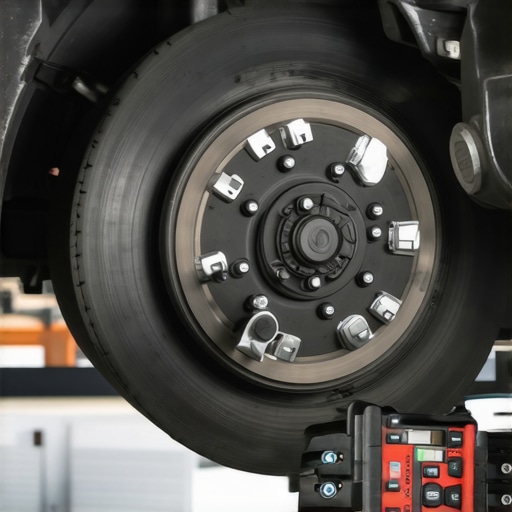My First Real Encounter with Brake Troubles: A Wake-Up Call
Not long ago, I was cruising down the highway when I suddenly noticed my brakes felt less responsive. That moment made me realize how crucial a reliable brake system is for safe driving. Since then, I’ve dedicated myself to understanding the best brake service strategies to keep myself and others safe on the road, especially as we venture into 2024.
Why Regular Brake Inspections Are a Game Changer
From my experience, scheduled brake inspections can prevent major issues before they escalate. I learned this the hard way when neglecting my brake pads led to a costly repair. Today, I make it a point to visit a trusted auto repair expert regularly. According to top brake service tips, routine maintenance not only extends the lifespan of brake components but also ensures optimal safety.
Practical Tips for Maintaining Your Brakes in 2024
Over time, I discovered simple yet effective habits that help maintain my brakes. These include checking brake fluid levels, listening for unusual noises, and paying attention to steering vibrations. Keeping your brake fluid clean and at the right level is essential, as it directly impacts braking performance. I also learned that driving habits, like avoiding sudden stops and gentle braking, can significantly reduce wear and tear.
What Are the Signs That Your Brake System Needs Attention?
This question often crossed my mind, especially during long drives. Common signs include squealing noises, a soft brake pedal, or a vibrating steering wheel. If you notice any of these, it’s wise to consult a professional immediately. Sometimes, issues like worn-out brake pads or damaged rotors can compromise safety, so don’t ignore the warning signs.
How Can I Ensure My Brakes Are Ready for Emergency Situations?
In my view, proactive maintenance is key. Ensuring your brake system is in top shape involves regular checks and replacing worn components promptly. I also found that investing in high-quality brake parts and fluids makes a difference. For more detailed guidance, I recommend visiting expert auto repair solutions.
Curious About How to Choose the Right Brake Service Provider?
Choosing a reputable brake service provider can be daunting. I look for certified technicians with good reviews and transparent pricing. It’s worth asking about warranties and the types of brake parts they use. Remember, quality service often pays off in the long run for safety and durability.
If you’ve had experiences or tips about brake maintenance, I’d love to hear your stories. Sharing our insights can help everyone drive safer in 2024. Feel free to comment below or explore more about auto repair at top auto repair tips.
Advanced Brake Technologies: What the Future Holds for Safer Driving
As automotive technology evolves, so does the potential for enhanced brake systems. From regenerative braking in electric vehicles to advanced driver-assistance systems integrating brake control, the future of braking is promising. These innovations aim to improve stopping distances, reduce wear, and increase overall safety. For instance, regenerative braking not only conserves energy but also alleviates the load on traditional brake components, extending their lifespan. Additionally, adaptive braking systems can automatically adjust braking force based on road conditions, providing a smoother, safer ride.
How Do These Cutting-Edge Brake Features Impact Routine Maintenance?
Understanding the implications of new brake technologies is essential for vehicle owners and auto repair professionals alike. Modern systems often require specialized diagnostics and servicing, emphasizing the importance of working with technicians trained in the latest innovations. Routine inspections now include checking electronic control modules, sensors, and software updates, alongside traditional brake components. Staying informed about these developments ensures you’re prepared for proactive maintenance and repairs that align with your vehicle’s advanced features.
The Nuance of Brake Fluid Choices in Modern Vehicles
While many drivers focus on brake pads and rotors, the importance of selecting the right brake fluid cannot be overstated. Different vehicles, especially those with high-performance or electric systems, demand specific fluid types that withstand higher temperatures and resist moisture absorption. Using the incorrect brake fluid can lead to corrosion, reduced braking efficiency, and costly repairs. Consulting your vehicle’s manufacturer guidelines or a trusted auto repair expert can help you choose the optimal fluid to maintain brake performance and longevity. For tailored advice, visit expert auto repair solutions.

Understanding the intricate parts of your brake system is vital for effective maintenance. An illustrative image highlighting key components like brake pads, rotors, calipers, and sensors can provide clarity and empower vehicle owners to recognize signs of wear early.
Can You Recognize the Subtle Signs That Indicate Brake System Degradation?
Many drivers overlook minor issues that, if addressed promptly, can prevent major failures. Squeaking noises, a spongy pedal, or a pulsing steering wheel are often early indicators of brake problems. Recognizing these signs allows you to seek professional help before safety is compromised. Regularly reviewing your driving habits and maintaining a schedule for inspections, especially if you frequently drive in stop-and-go traffic or mountainous terrain, can significantly enhance your safety.
What Are the Practical Steps for Maintaining Brake Reliability in Challenging Conditions?
Driving in harsh weather, such as heavy rain, snow, or salty environments, demands extra vigilance. Washing your vehicle regularly to remove corrosive materials, checking brake fluid levels, and inspecting brake components more frequently are practical measures. Upgrading to corrosion-resistant parts or protective coatings can also extend the life of your braking system. For more comprehensive maintenance strategies, explore top brake service tips tailored for vehicle longevity and safety.
Unraveling the Nuances of Brake Fluid Selection: A Personal Reflection on Modern Vehicles
Choosing the right brake fluid might seem like a minor detail, but for me, it became a pivotal point in understanding how modern vehicles demand more nuanced maintenance. Early in my driving journey, I underestimated this aspect, often sticking to generic fluids without considering the specific needs of my high-performance car. Over time, I realized that using the incorrect brake fluid could lead to corrosion, reduced braking efficiency, and costly repairs. This insight pushed me to consult my vehicle’s manufacturer guidelines and work closely with auto repair experts, like those at professional auto repair, to ensure I was making informed choices. The key takeaway? Always prioritize compatibility and quality—your safety depends on it.
Advanced Brake Maintenance Strategies for the Modern Driver
As vehicles evolve, so do the complexities of maintaining their braking systems. I’ve found that routine inspections now involve more than just checking pads and rotors. Modern systems incorporate electronic control modules, sensors, and software updates that also require attention. For example, I make a point to have my vehicle’s electronic systems checked regularly to prevent any underlying issues that could compromise braking performance. Additionally, I’ve adopted more sophisticated habits, like monitoring brake fluid health more diligently and using protective coatings to combat corrosion, especially in challenging weather conditions. These proactive steps have significantly extended my brake system’s lifespan and reliability.
How Do Emerging Brake Technologies Affect DIY Maintenance and Professional Service?
In my experience, staying ahead of emerging brake technologies—such as regenerative braking in EVs or adaptive systems—means collaborating with knowledgeable technicians. These innovations often require specialized diagnostics, software updates, and component replacements that go beyond traditional maintenance. I’ve learned that working with certified professionals who stay current with industry advancements is crucial. For instance, understanding how regenerative braking not only conserves energy but also reduces wear on traditional brake parts has made me more vigilant about servicing these systems properly. For those interested in future-proofing their vehicles, exploring top brake service tips for 2024 can provide valuable guidance.
Understanding the intricate parts of your brake system is vital for effective maintenance. An illustrative image highlighting key components like brake pads, rotors, calipers, and sensors can provide clarity and empower vehicle owners to recognize signs of wear early.
Reflecting on My Personal Journey with Brake Maintenance
Looking back, I realize that embracing a proactive, knowledge-driven approach has transformed my driving experience. The importance of choosing the right fluids, understanding advanced technologies, and trusting skilled professionals cannot be overstated. I’ve found that every maintenance step, no matter how small, contributes to safer, more reliable driving—especially as vehicles become more complex. Sharing these insights and experiences with fellow drivers can foster a community of informed, safety-conscious individuals. If you’ve encountered similar challenges or have tips to share, I invite you to comment below or explore more at auto repair tips. Let’s continue learning from each other to navigate the evolving landscape of vehicle maintenance together.
Integrating Smart Diagnostics for Predictive Brake Care
One of the most transformative developments in brake maintenance is the advent of smart diagnostic tools that leverage vehicle telematics and sensor data. During my recent visits to auto repair shops, I observed how technicians now utilize advanced diagnostic systems capable of predicting brake system failures before they manifest physically. These systems analyze patterns such as brake pad wear, rotor temperature fluctuations, and sensor alerts to forecast potential issues, enabling proactive interventions that save time and costs. According to a comprehensive study by SAE International, integrating predictive diagnostics not only enhances safety but also optimizes maintenance schedules, reducing vehicle downtime and extending component lifespan.
The Role of High-Performance Brake Fluids in Niche Applications
While standard brake fluids serve the general population well, high-performance and electric vehicles demand specialized fluids that can withstand extreme conditions. From my experience, upgrading to synthetic or racing-grade brake fluids has made a noticeable difference in braking response, especially under heavy loads or high-speed scenarios. These fluids possess higher boiling points and superior moisture resistance, which are crucial for maintaining consistent brake performance. For example, in electric vehicles where regenerative braking reduces physical brake usage, the demand for durable fluids becomes even more critical. Consulting with trusted auto repair experts, like those at professional auto repair, can help ensure you select the right fluid tailored to your vehicle’s unique demands.
Adapting Maintenance Routines for Autonomous and Connected Vehicles
The rapid evolution toward autonomous driving and vehicle connectivity introduces new complexities into brake system maintenance. In my exploration of this trend, I realized that connected vehicles provide real-time data streams that can inform maintenance decisions proactively. For instance, software updates and sensor calibrations become routine parts of brake servicing, ensuring that autonomous systems function flawlessly. Regularly reviewing vehicle data logs and collaborating with technicians trained in these advanced systems can significantly improve safety and reliability. To stay ahead, I recommend reading authoritative insights on this topic at top auto repair tips, which cover the latest best practices for modern vehicle care.
What Are the Challenges and Opportunities of Implementing AI-Driven Brake Maintenance?
Implementing AI-powered maintenance solutions presents both hurdles and immense opportunities. My experience suggests that while AI can precisely predict issues and optimize repair schedules, it requires substantial investments in infrastructure and training. The challenge lies in integrating these systems seamlessly with existing diagnostic tools and ensuring data security. Conversely, the benefits include more accurate diagnostics, reduced repair times, and enhanced safety standards. As industry standards evolve, staying informed through expert resources such as professional auto repair is essential for leveraging these innovations effectively.
Understanding the intricate parts of your brake system is vital for effective maintenance. An illustrative image highlighting key components like brake pads, rotors, calipers, and sensors can provide clarity and empower vehicle owners to recognize signs of wear early.
My Evolving Perspective on Preventive Brake Maintenance
Reflecting on my journey, I realize that embracing cutting-edge technologies and advanced diagnostics has profoundly shifted my approach from reactive to preventive care. Regularly updating my knowledge and working with skilled professionals has made my driving experience safer and more reliable, especially as vehicle systems grow increasingly complex. I encourage fellow drivers to explore these innovations and share their insights, fostering a community committed to automotive safety in 2024 and beyond. To delve deeper into these topics, I invite you to connect and exchange experiences at auto repair tips. Together, we can navigate the future of vehicle maintenance with confidence and expertise.”}
Things I Wish I Knew Earlier (or You Might Find Surprising)
Hidden Signs Are Often the First Clues
Early in my driving days, I overlooked subtle indicators like slight vibrations or faint squeaks. It wasn’t until a minor issue escalated that I realized paying attention to these tiny signals can save a lot of money and risk. Recognizing these signs earlier could have prevented a more serious repair later on.
The Importance of Quality Parts
I used to think all brake parts were pretty much the same, but I learned that investing in high-quality brake pads and fluids makes a noticeable difference in safety and longevity. Cutting corners might save money initially, but it often leads to more frequent repairs and safety concerns down the line.
Routine Maintenance Is a Game Changer
Scheduling regular brake inspections has become a routine in my driving life. It’s easy to forget, but these checkups can catch issues before they turn into costly repairs or safety hazards, especially as vehicles incorporate more advanced technology.
Technology Will Continue to Evolve
From regenerative braking to smart diagnostics, the future of brake systems is exciting. Staying informed about these innovations helps me work better with my auto repair team and ensures my vehicle remains safe and efficient.
Weather and Environment Matter
Driving in harsh weather conditions demands extra vigilance. I’ve found that regular cleaning and using corrosion-resistant parts significantly extend the life of my brakes, especially in salty or wet environments.
Resources I’ve Come to Trust Over Time
- SAE International: Their comprehensive research on automotive safety and innovations has been invaluable for understanding emerging brake technologies. I recommend checking out their publications for industry insights.
- Automotive Service Association (ASA): This organization offers trusted guidelines and certification standards that help me identify qualified technicians and reliable service providers.
- Consumer Reports: Their reviews and safety ratings give an honest view of vehicle parts and service quality, which I find helpful when choosing auto repair shops.
- Manufacturer’s Official Manuals: Always my first source for compatibility and specifications—you can’t go wrong consulting your vehicle’s official documentation.
Parting Thoughts from My Perspective
Reflecting on my journey with brake maintenance, I realize that proactive care and staying informed about the latest advancements are key to safe driving in 2024. Regular inspections, quality components, and embracing new technologies have transformed my approach from reactive to preventive. If this resonates with you, I’d love to hear your experiences or tips. Sharing knowledge helps us all drive safer and smarter—so feel free to drop your thoughts in the comments or explore more about auto repair at top auto repair tips. Together, we can navigate the evolving landscape of vehicle maintenance with confidence and care.”},




Reading about the importance of regular brake inspections really resonated with me. I used to overlook routine checks until I faced the costly repair of a warped rotor caused by delayed maintenance. Now, I make it a point to schedule inspections seasonally, especially before winter driving, which tends to be harsher on brake systems. I’m curious, how do others in colder climates manage their brake maintenance effectively? Do you prefer proactive parts replacement or waiting for signs of wear? I believe that staying ahead of potential issues not only saves money but also enhances safety, particularly as vehicles incorporate more advanced braking technologies. Would love to hear tips from fellow drivers about best practices for maintaining brakes in challenging weather conditions.